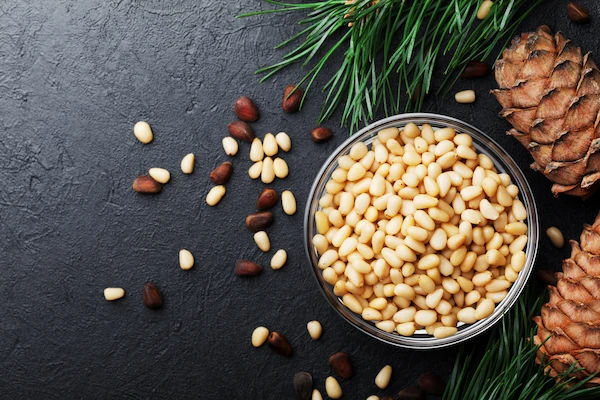How to Reduce Chest Pain?
Manage chest pain with diet, exercise, and stress relief. Explore treatments, risk factors, and when to see a doctor. Your guide to heart health and long-term well-being.

Written by Dr.Sonia Bhatt
Last updated on 3rd Jul, 2025

Chest pain can be alarming, whether it’s a sharp stab, a dull ache, or a crushing pressure. While it might stem from something as simple as indigestion or muscle strain, it can also signal serious conditions like a heart attack. Understanding the causes, recognizing warning signs, and knowing how to respond can save lives. This guide offers clear, actionable steps to manage chest pain, localised heart health, and reduce risk.
Understanding Chest Pain: Common Causes
Chest pain is not a diagnosis but a symptom with myriad potential triggers. Pinpointing the cause is the first step toward effective management. Below, we explore the most common causes, from cardiac issues to stress-related discomfort:
1. Heart-Related Causes
Some of the heart-related causes include:
Angina: Reduced blood flow to the heart, often triggered by physical or emotional stress.
Heart Attack: A blocked artery cutting off blood supply to the heart muscle.
Pericarditis: Inflammation of the heart’s protective lining.
2. Digestive Issues
Digestive issues include:
Acid Reflux: Stomach acid irritating the oesophagus, causing a burning sensation.
Gallbladder Problems: Pain that radiates to the chest after eating fatty foods.
3. Muscle or Bone Strain
Muscle or bone strain include:
Costochondritis: Inflammation of rib cartilage, often mistaken for heart pain.
Injury: Overexertion during exercise or heavy lifting.
4. Anxiety or Stress
Anxiety or stress related issues include:
Panic attacks: Similar to heart-related symptoms, including chest tightness and rapid heartbeat.
Recognising Symptoms: When to Take Action
Distinguishing between heart-related symptoms like pressure radiating to the arm or jaw, and non-cardiac pain, such as acid reflux, is critical. Here’s how to distinguish common types:
1. Heart-Related Pain
Hear-related pain includes:
Feeling: Pressure, squeezing, or heaviness in the centre of the chest.
Spread: May radiate to the arms (especially the left), jaw, neck, or back.
Triggers: Physical activity, stress, or cold weather.
Other Symptoms: Shortness of breath, nausea, cold sweats, or dizziness.
2. Non-Cardiac Pain
Non-cardiac pain includes:
Acid Reflux: Burning sensation that worsens after meals or when lying down.
Muscle Strain: Sharp pain localised to one area, worsening with movement.
Anxiety: Sudden, fleeting pain paired with rapid breathing or trembling.
Immediate Steps during a Chest Pain Episode
If chest pain occurs, act promptly: stay calm, sit or lie down, and practise controlled breathing to reduce stress. Use prescribed medications such as nitroglycerin for angina or aspirin (if advised) for suspected heart attacks to alleviate symptoms. Prioritise safety, follow medical guidance, and seek emergency assistance to prevent complications while awaiting professional care.
1. Stay Calm and Assess the Situation
Panic can worsen symptoms. Sit or lie down in a comfortable position and focus on slow, deep breathing:
Inhale deeply through your nose for 4 seconds.
Hold for 4 seconds, then exhale slowly through pursed lips.
Repeat until help arrives or symptoms ease.
2. Use Prescribed Medications
Prescribed medications include:
Nitroglycerin: If prescribed for angina, take as directed (usually placed under the tongue).
Aspirin: For suspected heart attacks, chew a 325mg tablet to improve blood flow—only if recommended by a healthcare provider.
Long-Term Strategies to Reduce Chest Pain
Implementing long-term lifestyle changes is essential for reducing chest pain and enhancing cardiovascular health. Adopting a heart-healthy diet, engaging in regular physical activity, and managing stress effectively can significantly lower the risk of heart-related issues. These strategies promote overall well-being and contribute to a healthier, pain-free life.
1. Adopt a Heart-Healthy Diet
A balanced diet supports cardiovascular health and reduces acid reflux:
Fruits and Vegetables: Aim for 5+ servings daily for fiber and antioxidants.
Whole Grains: Oats, quinoa, and brown rice help lower cholesterol.
Lean Proteins: localised fish, poultry, beans, and legumes.
Healthy Fats: Avocados, nuts, and olive oil reduce inflammation.
2. Stay Active
Regular exercise strengthens the heart and improves circulation:
Aerobic Exercise: Aim for 150 minutes of moderate activity weekly (e.g., brisk walking, cycling).
Strength Training: Build muscle with light weights or resistance bands twice a week.
3. Manage Stress and Mental Health
Chronic stress raises blood pressure and contributes to chest pain. Try:
Mindfulness Meditation: Apps like ThinkRight.me or Let’s Meditate offer guided sessions.
Yoga or Tai Chi: Combines gentle movement with relaxation.
Therapy: Cognitive Behavioural Therapy (CBT) helps address anxiety.
Medical Treatments and Monitoring
Tailored medications and regular check-ups ensure timely adjustments to care and long-term health protection.
1. Medications
Depending on the cause, doctors may prescribe:
Nitrates: Relax blood vessels to ease angina.
Beta-Blockers: Lower heart rate and blood pressure.
Antacids: Reduce stomach acid for reflux-related pain.
Statins: Lower LDL cholesterol to prevent plaque buildup in arteries.
ACE Inhibitors: Improve blood flow by relaxing blood vessels.
Proton Pump Inhibitors (PPIs): Block acid production in the stomach for GERD relief.
2. Procedures for Severe Cases
For severe cardiovascular blockages advanced interventions specified below may restore blood flow and improve heart function:
Angioplasty: Opens blocked arteries using a tiny balloon and stent.
Bypass Surgery: Redirects blood flow around blocked vessels.
3. Regular Check-Ups
Routine health screenings are key to prevention:
Blood Pressure: Monitor regularly, especially if you have hypertension. Home monitors are affordable and easy to use.
Cholesterol and Blood Sugar: Get tested annually if at risk for heart disease.
Electrocardiogram (ECG): Detects irregular heart rhythms during routine exams.
Prevention: Tackling Risk Factors
Preventing chest pain involves addressing key risk factors through sustainable lifestyle adjustments. Proactive management of these habits lowers cardiovascular risks and fosters long-term well-being, supporting a healthier, symptom-free life.
1. Quit Smoking
Smoking damages blood vessels and increases heart attack risk.
2. Limit Alcohol
Excessive drinking raises blood pressure. Stick to moderate guidelines (e.g., 1-2 drinks daily).
3. Maintain a Healthy Weight
Obesity strains the heart and worsens acid reflux.
Use tools like BMI calculators or nutrition apps to track progress.
4. Prioritise Sleep
Aim for 7–9 hours of sleep.
When to See a Doctor?
Even mild or occasional chest pain should be evaluated. Schedule an appointment if you experience:
Pain triggered by exertion.
Persistent indigestion-like symptoms.
Unexplained fatigue or dizziness.
Managing Underlying Medical Conditions
Addressing underlying health issues is crucial for reducing chest pain. Here are some common conditions and how to manage them:
Control High Blood Pressure: High blood pressure strains the heart and can cause chest pain. Manage it by taking prescribed medications regularly, reducing salt intake and exercising.
Manage Cholesterol Levels: High cholesterol can lead to blocked arteries and chest pain. Lower it by eating a diet low in saturated fats, taking statins or other cholesterol-lowering medications and exercising regularly.
Treat Acid Reflux and GERD: Acid reflux can cause a burning sensation in the chest. Manage it by avoiding spicy, fatty, or acidic foods, eating smaller, more frequent meals, and taking antacids or proton pump inhibitors as prescribed.
Address Anxiety and Stress: Stress and anxiety can trigger chest pain. Reduce them by practising relaxation techniques like deep breathing or meditation, and engaging in hobbies or activities you enjoy.
Manage Diabetes: Uncontrolled diabetes can damage blood vessels and nerves, leading to chest pain. Keep it under control by monitoring blood sugar levels regularly, following a balanced diet, and taking prescribed medications or insulin.
Conclusion
Chest pain demands attention, but it doesn’t always mean disaster. By understanding the causes, acting quickly in emergencies, and adopting heart-healthy habits, you can reduce your risk and improve your quality of life. Prevention through diet, exercise, and stress management is your best defence.
Consult Top Cardiologist
Consult Top Cardiologist

Dr. S B Bhattacharyya
Cardiologist
22 Years • MBBS, MD(General Medicine),DM (Cardiology)
Kolkata
Gariaheart Clinic, Kolkata
Dr. Jayarajah Mariappan
Cardiologist
45 Years • MBBS, MD(GEN MEDICINE), DM(CARDIOLOGY)
Chennai
Sooriya Hospital, Chennai

Dr. Amit. A. Bharadiya
Cardiologist
12 Years • MBBS, MD General Medicine, DNB Cardiology, FSCAI
Maharashtra
Surabhi Hospital, Maharashtra, Maharashtra

Dr. Sumanta Chatterjee
Cardiologist
12 Years • MBBS,MD General Medicine,DM Cardiology
Kolkata
HealthYou Speciality Clinic & Diagnostics., Kolkata
(25+ Patients)

Dr. Mangesh Danej
Cardiologist
8 Years • MBBS, MD (General Medicine), DNB (Cardiology)
Pune
Dr Danej clinic, Pune
(375+ Patients)




